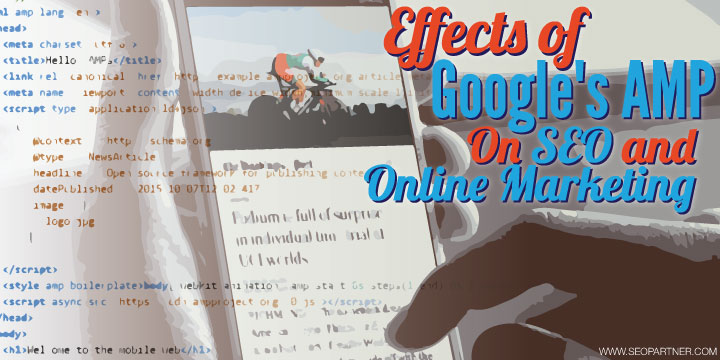Source: https://moz.com/blog/how-googles-amp-will-influence-your-online-marketing
Google AMP is a way to fast-track content to mobile devices by relying on a specific form of HTML called AMP HTML. This way, mobile users can view articles up to 10 times faster.
Importance of AMP for SEO
– faster sites rank higher
– mobile-friendly sites are more likely to be clicked
How does Google AMP work?
* AMP HTML uses a set of pre-processing tags for text formatting and image embedding tags such as amp-ad, amp-embed, amp-img, amp-pixel, and amp-video
* AMP JS loads all external resources in an asynchronous way. This keeps “render blocking” from interfering with how quickly what the user can see. It also predicts which DNS resources and connections will be needed so it can pre-render content and pre-size images.
* AMP Cache grabs the most recent content and pre-positions them around the globe.
Positive Effects of AMP on SEO and Online Marketing
1. AMP is open source. This means it is open to the world of Google’s greatest developers.
2. AMP enabled articles will rank higher in the SERPs.
3. Paid search impressions will likely increase. Users usually click back on the search results to see what elese there might be. This will affect the number of paid search impressions.
4. AMP is for every publisher. Anyone can AMP format his or her content.
5. AMP content gets more readers.
6. More formatting options and features are still to come.
7. AMP will have analytics.
Negative Effects of AMP on SEO and Online Marketing
1. There are no forms in AMP content. If you need a form that can gather contact information to generate leads, you’ll have to wait for an AMP upgrade.
2. There are no external style sheets or Javascript.
3. Paid search result item impressions could decrease. If a search term is broad (i.e. “news,” “fashion,”), AMP articles will probably appear more frequently than paid search results.
4. AMP doesn’t solve the problem of page speed SEO for non-publisher sites. AMP is not intended to speed up e-commerce or brand sites, only news-type articles and blog posts.
